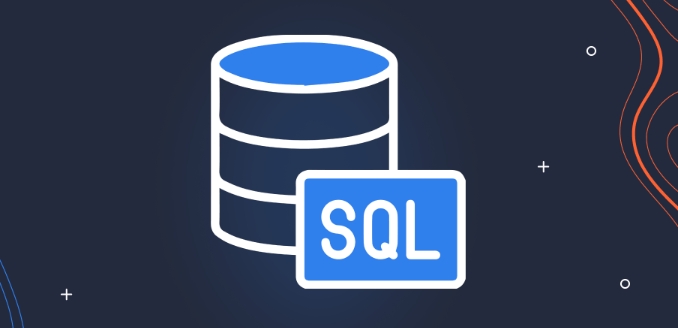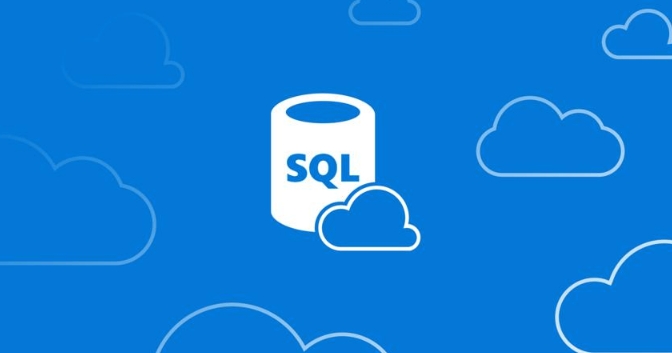Implementing Data Lineage in SQL Databases
Aug 01, 2025 am 07:13 AMThe key to realizing data ties in SQL databases is to clearly record and track the source and circulation paths of data through annotations, ETL logs, view dependencies and tool automation. 1. Use tables and fields to record source information, such as COMMENT ON COLUMN statements, and recommend unified formats for maintenance; 2. Add logging conversion paths in the ETL process to clarify the relationship between source tables and target tables, and support point-in-time tracking and error troubleshooting; 3. Use views to explicitly define query dependencies, encapsulate complex logic, and regularly extract dependencies to build a map; 4. Use open source or commercial tools such as OpenMetadata and Apache Atlas to automatically analyze and display field-level blood ties to improve efficiency. These methods can effectively realize data blood relationship management.

Implementing Data Lineage in SQL databases is not actually mysterious, and it is not necessary to rely on expensive tools. The key is to understand the logic of "where to come from and where to go" and express this relationship through appropriate structure and recording methods. The following aspects are the most worthy of attention in actual operation.

1. Record source information using comments and metadata
SQL tables and fields comments are one of the most direct and easiest sources of data to maintain. Many databases support COMMENT or DESCRIPTION fields, which can be used to record which table and which field is mapped from.
For example:

COMMENT ON COLUMN sales.order.customer_id IS 'from customers.id';
This method is simple but very practical, especially when teamwork or handover, which can quickly explain the source of the field.
suggestion:

- When creating or modifying the table structure, add a source description;
- It is recommended to have a unified format, such as "from [schema].[table].[column]";
- Data dictionaries can be automatically generated with documenting tools.
2. Use ETL logs or intermediate tables to record conversion paths
If your system has regular ETL processes (such as reports or summary tables that run daily), you can add logging to these processes to clearly indicate which source tables are involved in the calculation and how the target table is generated.
For example, add log write statements in stored procedures:
INSERT INTO lineage_log (source_table, target_table, transformation_time) VALUES ('orders', 'daily_sales_summary', NOW());
In this way, after each ETL is executed, the complete "migration path" can be found.
benefit:
- Can track the time point of each change;
- Can be used to audit or troubleshoot the source of errors;
- If combined with scheduling tools (such as Airflow), dependencies in the DAG can also be automatically recorded.
3. Explicitly define dependencies through view or materialized view
View itself is a natural manifestation of data. A view's SELECT statement clearly displays the tables and fields it depends on.
for example:
CREATE VIEW customer_orders AS SELECT c.name, o.order_date, o.amount FROM customers c JOIN orders o ON c.id = o.customer_id;
You can get the upstream object it depends on by parsing the definition of the view.
suggestion:
- Try to encapsulate complex queries into views;
- Avoid nesting views that are too deep, otherwise it will affect readability;
- Scan all views regularly and extract dependencies to form a visual map.
4. Use tools to assist in automation analysis
Although the above methods can be completed manually, if the database is large, it is recommended to use some open source or commercial tools to automatically crawl and display data.
Common tools are:
- OpenMetadata : an open source metadata management platform that supports SQL parsing and blood analysis;
- Apache Atlas : Suitable for the big data ecosystem and also supports some SQL sources;
- DBmaestro / Informatica : Commercial product, more comprehensive features, suitable for enterprise-level deployment.
These tools can usually automatically identify field-level dependencies from SQL scripts or execution plans, saving a lot of manual combing time.
Basically these methods. The key to achieving data ties is not how advanced the tools are, but the habit of continuous maintenance. Even if you only add a few comments at the beginning, it can lay the foundation for subsequent data governance.
The above is the detailed content of Implementing Data Lineage in SQL Databases. For more information, please follow other related articles on the PHP Chinese website!

Hot AI Tools

Undress AI Tool
Undress images for free

Undresser.AI Undress
AI-powered app for creating realistic nude photos

AI Clothes Remover
Online AI tool for removing clothes from photos.

Clothoff.io
AI clothes remover

Video Face Swap
Swap faces in any video effortlessly with our completely free AI face swap tool!

Hot Article

Hot Tools

Notepad++7.3.1
Easy-to-use and free code editor

SublimeText3 Chinese version
Chinese version, very easy to use

Zend Studio 13.0.1
Powerful PHP integrated development environment

Dreamweaver CS6
Visual web development tools

SublimeText3 Mac version
God-level code editing software (SublimeText3)

Hot Topics
 Steps to install SQL Server 2021 Developer Edition on Windows 11
Apr 25, 2023 pm 03:07 PM
Steps to install SQL Server 2021 Developer Edition on Windows 11
Apr 25, 2023 pm 03:07 PM
<ul><li><strong>Click to enter: </strong>ChatGPT tool plug-in navigation list</li></ul><h3>Download address: https://www.microsoft. com/en-us/sql-server/sql-server-downloads</h3>&l
 Redis vs. SQL Databases: Key Differences
Apr 25, 2025 am 12:02 AM
Redis vs. SQL Databases: Key Differences
Apr 25, 2025 am 12:02 AM
The main difference between Redis and SQL databases is that Redis is an in-memory database, suitable for high performance and flexibility requirements; SQL database is a relational database, suitable for complex queries and data consistency requirements. Specifically, 1) Redis provides high-speed data access and caching services, supports multiple data types, suitable for caching and real-time data processing; 2) SQL database manages data through a table structure, supports complex queries and transaction processing, and is suitable for scenarios such as e-commerce and financial systems that require data consistency.
 Introduction to SQL and NoSQL databases in Java language
Jun 10, 2023 pm 07:01 PM
Introduction to SQL and NoSQL databases in Java language
Jun 10, 2023 pm 07:01 PM
With the development of the Internet, data has become a vital part of businesses and organizations, and managing data has become increasingly complex. In order to effectively manage data, databases have become an essential tool. In the Java language, SQL and NoSQL databases are two common database types. This article will introduce these two database types and their application in Java development. SQL database SQL is the abbreviation of StructuredQueryLanguage. It is a data processing method that uses structured query language.
 Comparison of PHP and traditional SQL database
May 17, 2023 pm 02:51 PM
Comparison of PHP and traditional SQL database
May 17, 2023 pm 02:51 PM
PHP is an open source scripting language widely used for web development. SQL (StructuredQueryLanguage) is a standard language used to access and manage relational databases. In web development, PHP and SQL are two commonly used tools. This article will compare the relationship between PHP and traditional SQL databases and explore their respective advantages and disadvantages. Database connection PHP can connect to various types of databases, including MySQL, PostgreSQL and Oracle.
 SQL: The Language of Databases Explained
Apr 27, 2025 am 12:14 AM
SQL: The Language of Databases Explained
Apr 27, 2025 am 12:14 AM
SQL is the core tool for database operations, used to query, operate and manage databases. 1) SQL allows CRUD operations to be performed, including data query, operations, definition and control. 2) The working principle of SQL includes three steps: parsing, optimizing and executing. 3) Basic usages include creating tables, inserting, querying, updating and deleting data. 4) Advanced usage covers JOIN, subquery and window functions. 5) Common errors include syntax, logic and performance issues, which can be debugged through database error information, check query logic and use the EXPLAIN command. 6) Performance optimization tips include creating indexes, avoiding SELECT* and using JOIN.
 SQL: Making Data Management Accessible to All
Apr 12, 2025 am 12:14 AM
SQL: Making Data Management Accessible to All
Apr 12, 2025 am 12:14 AM
SQLmakesdatamanagementaccessibletoallbyprovidingasimpleyetpowerfultoolsetforqueryingandmanagingdatabases.1)Itworkswithrelationaldatabases,allowinguserstospecifywhattheywanttodowiththedata.2)SQL'sstrengthliesinfiltering,sorting,andjoiningdataacrosstab
 The Importance of SQL: Data Management in the Digital Age
Apr 23, 2025 am 12:01 AM
The Importance of SQL: Data Management in the Digital Age
Apr 23, 2025 am 12:01 AM
SQL's role in data management is to efficiently process and analyze data through query, insert, update and delete operations. 1.SQL is a declarative language that allows users to talk to databases in a structured way. 2. Usage examples include basic SELECT queries and advanced JOIN operations. 3. Common errors such as forgetting the WHERE clause or misusing JOIN, you can debug through the EXPLAIN command. 4. Performance optimization involves the use of indexes and following best practices such as code readability and maintainability.
 phpMyAdmin: Managing SQL Databases with Ease
May 01, 2025 am 12:24 AM
phpMyAdmin: Managing SQL Databases with Ease
May 01, 2025 am 12:24 AM
phpMyAdmin is a tool for managing MySQL and MariaDB databases through a web interface. 1) Create a database: Use the CREATEDATABASE command. 2) Create table and insert data: Use the CREATETABLE and INSERTINTO commands. 3) Create a view: Use the CREATEVIEW command to simplify querying. 4) Optimize table: Use the OPTIMIZETABLE command to improve query speed.






